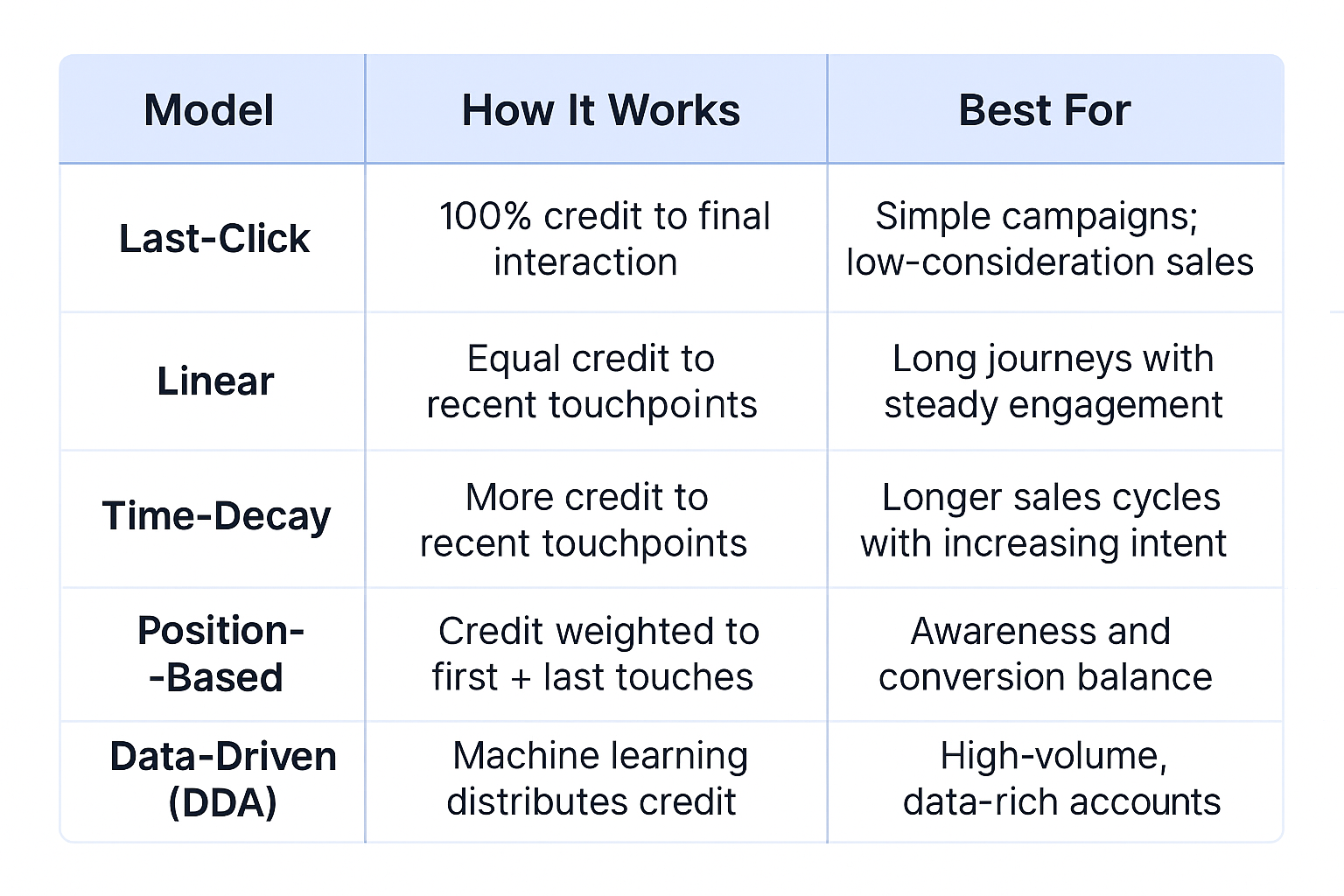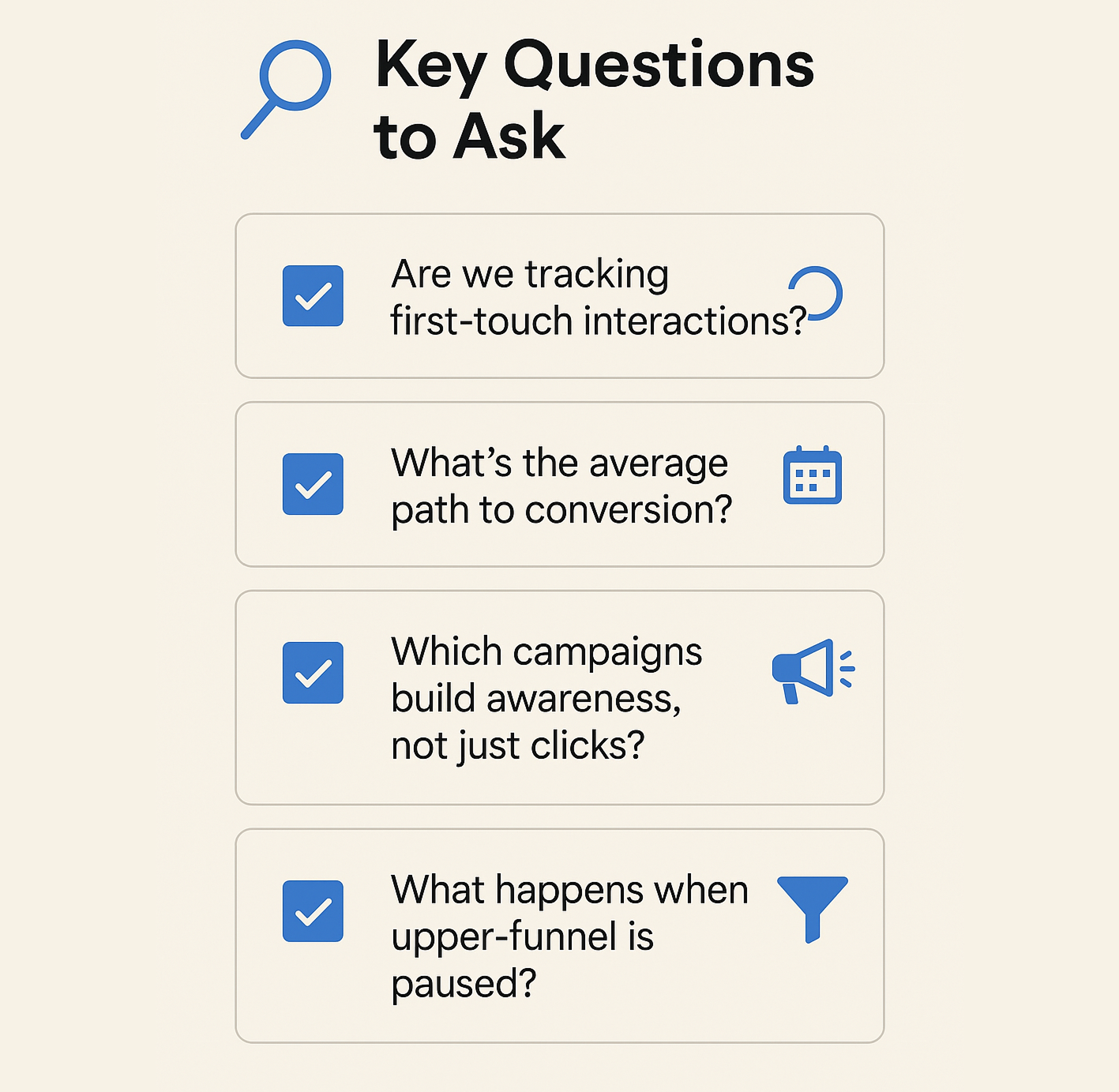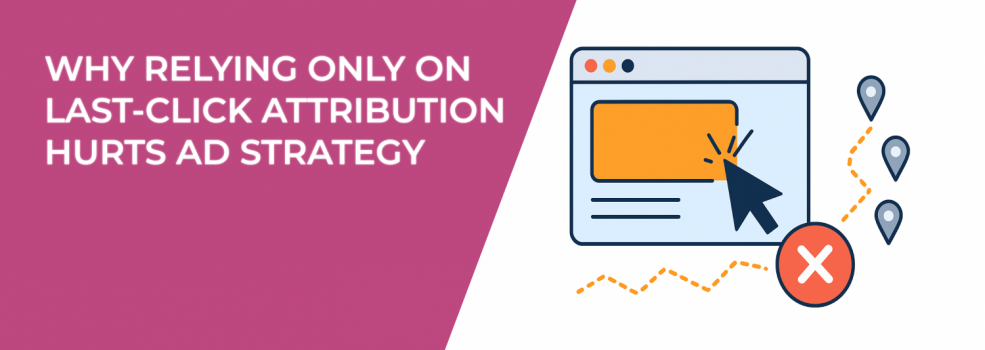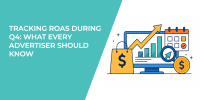Attribution is the foundation of effective ad strategy. But if you’re still relying solely on last-click attribution, you’re not just simplifying the data — you’re likely misallocating budget, missing valuable insights, and limiting long-term growth.
Today’s consumer journey is rarely linear. People interact with brands across multiple channels, on different devices, and over extended timeframes. Yet, many marketing teams still base their entire performance analysis on the final click before a conversion.
It’s convenient. It’s familiar. But it’s not accurate.
In this guide, we’ll explore:
-
What last-click attribution is and why it’s popular;
-
The risks it poses to performance measurement and ROI;
-
Smarter attribution models you should consider;
-
Key questions to improve your tracking strategy;
-
Real-world examples to bring it all to life.
Let’s unpack the issue — and see how to get a clearer, more strategic view of what’s really driving your conversions.
What Is Last-Click Attribution?
Last-click attribution assigns all credit for a conversion to the final interaction a user had before completing a purchase or submitting a lead.
Here’s how it typically plays out:
A person sees your YouTube ad on Monday, clicks an Instagram carousel on Wednesday, then types your brand name into Google and clicks a search ad on Friday. After that, they complete a purchase.
Under last-click attribution, only the Google Search ad gets credit. Every other touchpoint — including the YouTube impression and Instagram engagement — is ignored.
This model is simple to implement, which is why it’s common. But simplicity doesn’t reflect how people actually discover, consider, and decide to buy.
Why Last-Click Attribution Skews Your Strategy
1. It Overvalues Lower-Funnel Channels
Last-click attribution makes it look like paid search or retargeting campaigns are the biggest drivers of performance. But in reality, these channels often serve as the final step — the closer, not the creator of demand.
What prompted the user to search for your brand in the first place? Maybe it was a review they saw, an influencer recommendation, or an ad on social.
Last-click strips away those layers, pushing you to overinvest in channels that close, while underfunding the ones that build interest.
If your funnel feels lopsided or you're struggling to scale, this might be why. It’s also a common reason Facebook Ads aren’t converting, even when engagement seems high.
2. It Undervalues Brand Awareness and Consideration
Some of the most critical — and costly — work happens early in the buyer journey. But last-click attribution erases top-of-funnel impact from your reporting.
This often leads to:
-
Slashed budgets for awareness campaigns;
-
Poor performance evaluations for video, influencer, or display ads;
-
Confusion over which creative assets actually drive long-term value.
The result? You stop funding the very strategies that built the interest in the first place.
Many advertisers also choose campaign objectives that prioritize conversion events too narrowly. Before launching, review your setup — our Meta Ad Campaign Objectives guide can help you align goals with attribution logic.
3. It Encourages Short-Term Thinking
With last-click data as your main reference point, you’re more likely to chase clicks than build meaningful brand connections. That often translates into overly aggressive retargeting, deep discounts, or performance campaigns that prioritize cheap leads over quality ones.
This short-term focus can come at the expense of long-term profitability.
Want to fix it at the root? Reevaluate how you define and segment your audience. Use this step-by-step guide to building a target audience to better align your campaigns with intent and funnel stage — not just the last click.
Real-World Example: The Hidden Power of Upper-Funnel Ads
Let’s say you’re launching a new product: a high-end ergonomic desk chair.
Your campaign includes:
-
YouTube pre-roll ads that introduce your brand and product;
-
Instagram carousel ads that showcase real customer setups;
-
Branded search campaigns that capture ready-to-buy users.
Your attribution reports show most conversions come from branded search. So, based on last-click logic, you cut YouTube and Instagram spend.
What you don’t see is:
-
A 35% increase in branded search volume after the YouTube campaign launched;
-
High engagement and shares on Instagram, leading to more brand exposure;
-
Product page visits that came from upper-funnel sources, not just search.
YouTube and Instagram didn’t get the last click, but they made the conversion possible. By cutting those campaigns, you may have weakened the whole funnel.
Better Attribution Models: What to Use Instead

If last-click attribution is limiting your vision, here are four models that offer more clarity and fairness:
1. Linear Attribution
Distributes equal credit across all touchpoints.
Best for: Brands with long, research-heavy buying cycles where each interaction builds momentum.
2. Time-Decay Attribution
Assigns more credit to recent touchpoints, but doesn’t ignore earlier ones.
Best for: Campaigns with a long sales journey where recency impacts decision-making.
3. Position-Based (U-Shaped) Attribution
Gives more weight to the first and last interactions, and splits the rest across middle touches.
Best for: Capturing both initial interest and conversion events without ignoring the journey.
4. Data-Driven Attribution (DDA)
Uses machine learning to analyze actual conversion paths and distribute credit based on what historically leads to results.
Best for: Larger advertisers using Google Ads or Meta with enough data to model attribution accurately.
Pro Tip: If you're seeing "Ad Set May Get Zero" in your Meta Ads account, attribution misalignment may be one of the culprits. Here’s how to fix it and get your delivery back on track.
Key Questions to Ask as You Reevaluate Attribution

As you move beyond last-click, these questions will help clarify your strategy:
-
Which channels introduce people to your brand?
-
What types of content lead to repeat touchpoints?
-
Are you crediting upper-funnel actions, or just final clicks?
-
What happens when you pause awareness campaigns?
-
Do attribution windows reflect how long your customer journey really takes?
Building a better attribution framework starts with understanding behavior — not just measuring the finish line.
Moving Toward Smarter Attribution: Actionable Next Steps
You don’t need to overhaul your entire strategy overnight. Here are five things you can do now:
-
Compare models using GA4 or Meta’s Attribution Settings.
-
Update your campaign objectives to better match funnel stages and journey lengths.
-
Use tracking parameters (like UTM tags) to monitor mid-funnel influence.
-
Define micro-conversions — video views, lead magnet downloads, email opens — to identify value earlier.
-
Monitor audience behavior trends, not just cost-per-click or ROAS. The Facebook Ad Targeting 101 guide explains how audience precision improves attribution visibility.
Final Thoughts: Attribution Is Strategy
Last-click attribution may feel familiar, but it’s rarely the full truth. It erases the nuance of multi-touch journeys, misleads performance evaluation, and can quietly drain your ROI over time.
If you want to scale, you need visibility.
If you want to grow sustainably, you need accuracy.
If you want to allocate budget effectively, you need attribution that reflects the real journey.
Stop rewarding the last click. Start recognizing the full story.

